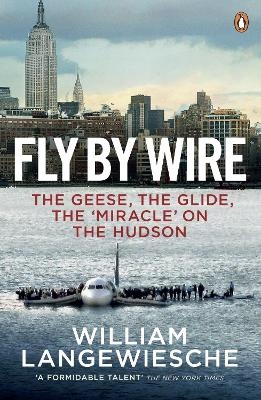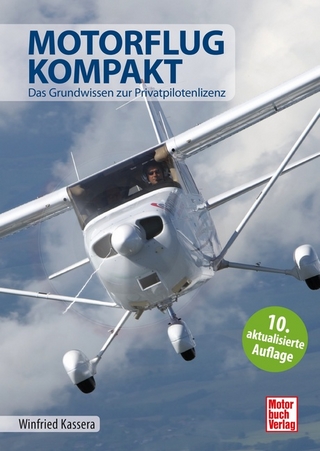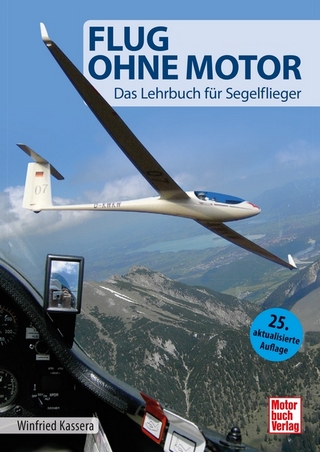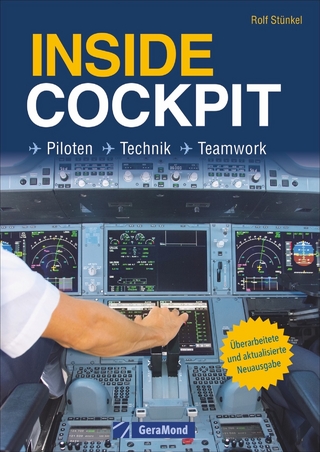
Fly By Wire
The Geese, The Glide, The 'Miracle' on the Hudson
Seiten
2010
Penguin Books Ltd (Verlag)
978-0-14-104674-7 (ISBN)
Penguin Books Ltd (Verlag)
978-0-14-104674-7 (ISBN)
From the testing laboratories where engineers struggle to build a jet engine that can resist bird attacks, through the creation of the A320 in France, to the political and social forces that have sought to minimize the impact of revolutionary fly-by-wire technology, this work lets us question our assumptions about human beings in modern aviation.
On January 15, 2009, a US Airways Airbus A320 had just taken off from LaGuardia Airport in New York, when a flock of Canada geese collided with it, destroying both of its engines. Over the next three minutes, the plane's pilot Chelsey "Sully" Sullenberger, managed to glide to a safe landing in the Hudson River. It was an instant media sensation, the "The Miracle on the Hudson", and Captain Sully was the hero. But, how much of the success of this dramatic landing can actually be credited to the genius of the pilot? To what extent is the "Miracle on the Hudson" the result of extraordinary - but not widely known, and in some cases quite controversial - advances in aviation and computer technology over the last twenty years?
From the testing laboratories where engineers struggle to build a jet engine that can systematically resist bird attacks, through the creation of the A320 in France, to the political and social forces that have sought to minimize the impact of the revolutionary fly-by-wire technology, William Langewiesche assembles the untold stories necessary to truly understand "The Miracle on the Hudson", and makes us question our assumptions about human beings in modern aviation.
On January 15, 2009, a US Airways Airbus A320 had just taken off from LaGuardia Airport in New York, when a flock of Canada geese collided with it, destroying both of its engines. Over the next three minutes, the plane's pilot Chelsey "Sully" Sullenberger, managed to glide to a safe landing in the Hudson River. It was an instant media sensation, the "The Miracle on the Hudson", and Captain Sully was the hero. But, how much of the success of this dramatic landing can actually be credited to the genius of the pilot? To what extent is the "Miracle on the Hudson" the result of extraordinary - but not widely known, and in some cases quite controversial - advances in aviation and computer technology over the last twenty years?
From the testing laboratories where engineers struggle to build a jet engine that can systematically resist bird attacks, through the creation of the A320 in France, to the political and social forces that have sought to minimize the impact of the revolutionary fly-by-wire technology, William Langewiesche assembles the untold stories necessary to truly understand "The Miracle on the Hudson", and makes us question our assumptions about human beings in modern aviation.
William Langewiesche is an author and journalist. He is currently intenraitonal correspondent for Vanity Fair, having made his name writing for Atlantic Monthly. His strong, evocative prose is used to devastating effect on a range of issues. Before embarking on a writing career he spent two decades as a professional pilot, having performed his first solo flight by the age of fourteen. He has been termed one of the leading writers of The New New Journalism, a group of writers who have secured a place at the centre of contemporary American literature, as Tom Wolfe and The New Journalism did in the sixties.
| Erscheint lt. Verlag | 4.2.2010 |
|---|---|
| Verlagsort | London |
| Sprache | englisch |
| Maße | 129 x 198 mm |
| Gewicht | 157 g |
| Themenwelt | Literatur ► Biografien / Erfahrungsberichte |
| Natur / Technik ► Fahrzeuge / Flugzeuge / Schiffe ► Luftfahrt / Raumfahrt | |
| ISBN-10 | 0-14-104674-0 / 0141046740 |
| ISBN-13 | 978-0-14-104674-7 / 9780141046747 |
| Zustand | Neuware |
| Haben Sie eine Frage zum Produkt? |
Mehr entdecken
aus dem Bereich
aus dem Bereich
das Grundwissen zur Privatpilotenlizenz
Buch | Hardcover (2024)
Motorbuch Verlag
39,90 €


